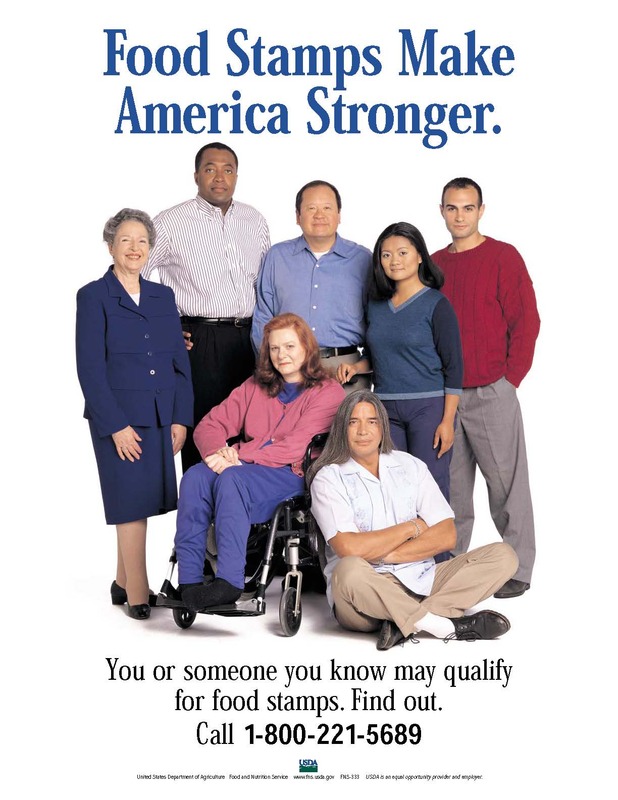Food Stamp Programs
Government food assistance can be traced to a federal government program established during the Great Depression when crop prices fell dramatically and farms across America struggled to deal with excess supply. To support farmers, the government bought basic farm commodities at discount prices and distributed them among hunger relief agencies in states and local communities. In 1939, low-income individuals received food assistance through the purchase of food stamps–some specifically for “surplus” foods.
President John F. Kennedy reintroduced the Food Stamp Program in 1961 through pilot programs in several states. Then, in 1964, President Lyndon B. Johnson authorized a food stamp program that gradually replaced the older Food (surplus commodity) Distribution Program. The goal was to use agricultural overproduction more effectively, improve nutrition among individuals with low incomes, and strengthen the agricultural economy.
In 2012, 15% of Americans—more than half of them children and the elderly—depended upon food stamps distributed through the Supplemental Nutrition Assistance Program (SNAP). Because SNAP is the largest program in the domestic hunger safety net, its viability and sustainability continues to be debated.
Further Reading
Spiker ML, Hiza HAB, Siddiqi SM, Neff RA. Wasted Food, Wasted Nutrients: Nutrient Loss from Wasted Food in the United States and Comparison to Gaps in Dietary Intake. J Acad Nutr Diet. 2017 May 11. pii: S2212-2672(17)30325-8.
Neff, R. A., Spiker, M. L., & Truant, P. L. (2015). Wasted Food: U.S. Consumers’ Reported Awareness, Attitudes, and Behaviors. PLoS ONE, 10(6), e0127881.
Cuéllar, A. D., & Webber, M. E. (2010). Wasted Food, Wasted Energy: The Embedded Energy in Food Waste in the United States. Environmental Science & Technology, 44(16), 6464–6469.
